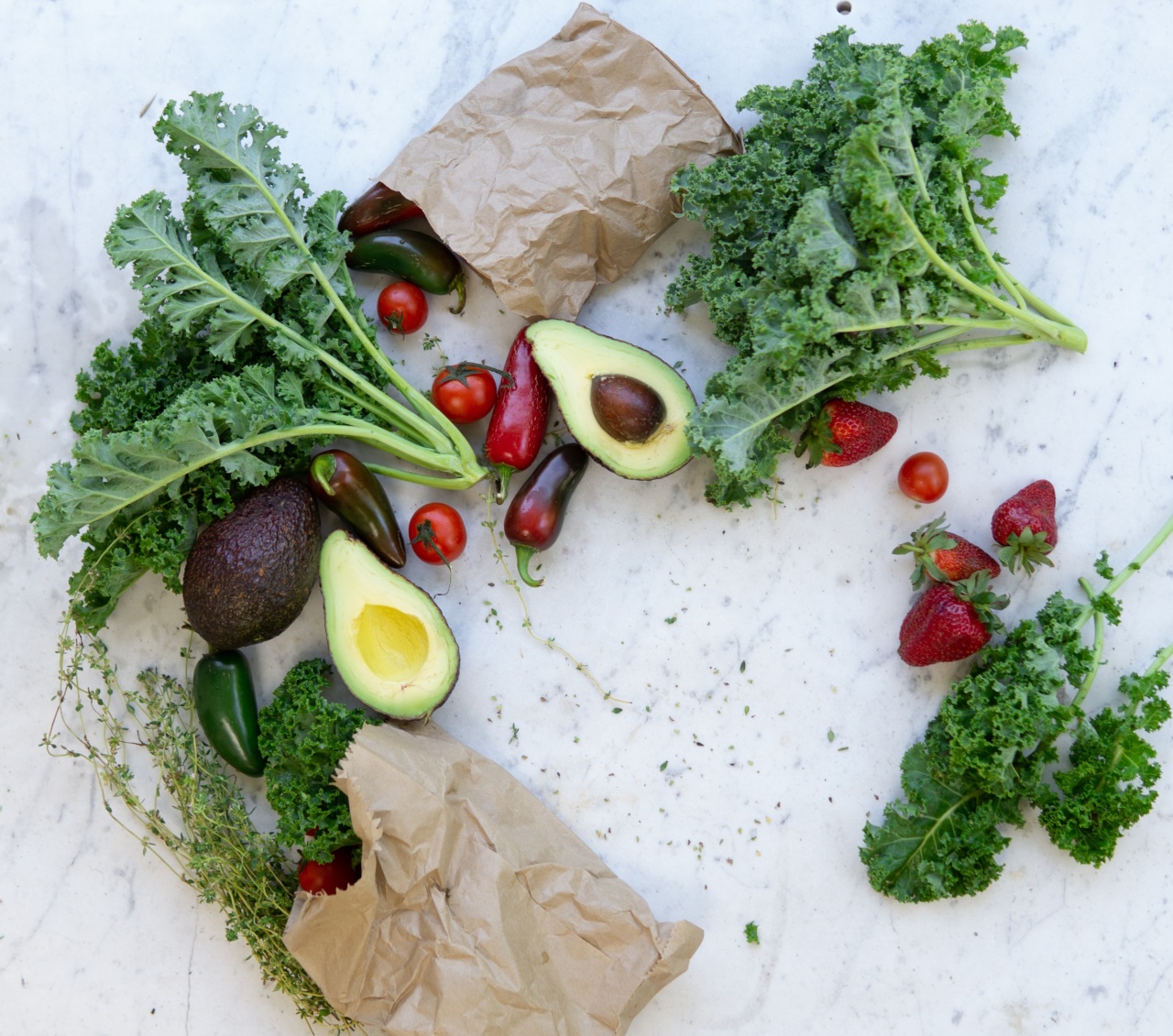When it comes to maintaining good eye health, incorporating nutrient-rich foods into your diet is crucial. One such superfood that can significantly improve your vision is kale.
Kale, a dark leafy green vegetable packed with vitamins and antioxidants, has gained immense popularity in recent years due to its numerous health benefits. From promoting heart health to aiding in digestion, kale has proven to be a versatile and nutritious addition to any meal.
In this article, we will explore the various ways in which incorporating kale into your diet can help improve your vision and overall eye health.
Antioxidants in Kale: Protecting Your Vision
Kale is jam-packed with antioxidants that have been linked to a reduction in age-related eye disorders.
Oxidative stress and free radicals can cause damage to the cells in our eyes, leading to conditions such as cataracts, glaucoma, and macular degeneration. Antioxidants help combat these harmful free radicals, reducing the risk of developing these debilitating eye diseases.
Lutein and Zeaxanthin: The Dynamic Duo
Kale contains high levels of two specific antioxidants known as lutein and zeaxanthin. These compounds are essential for maintaining good vision, as they are primarily concentrated in the macula and retina of the eye.
Lutein and zeaxanthin act as natural sunscreens for our eyes, protecting them from harmful ultraviolet (UV) rays emitted by the sun. They also filter out potentially damaging blue light and reduce the risk of developing age-related macular degeneration and cataracts.
Vitamin A: The Key to Healthy Eyes
Vitamin A is vital for maintaining good eyesight, and kale is an excellent source of this essential nutrient. Our bodies convert the beta-carotene found in kale into vitamin A, which is necessary for proper retinal function.
Vitamin A deficiency can result in night blindness and dry eyes. By incorporating kale into your diet, you can significantly boost your vitamin A intake and promote healthy eyes.
Prevention of Dry Eyes
Many individuals suffer from dry eyes caused by factors such as insufficient tear production and increased tear evaporation. To alleviate this uncomfortable condition, it is crucial to consume foods rich in omega-3 fatty acids.
Kale is a great source of these healthy fats, which can reduce inflammation in the eyes and increase tear production, ultimately preventing dry eye syndrome.
Reducing the Risk of Cataracts
Cataracts, the clouding of the eye’s natural lens, commonly occur with age. However, a diet rich in antioxidant-rich foods, such as kale, can help reduce the risk of developing cataracts.
The lutein and zeaxanthin in kale help protect the eye’s lens from oxidative stress and UV damage, maintaining its clarity and preventing the formation of cataracts.
Macular Degeneration Prevention
Age-related macular degeneration (AMD) is a condition in which the macula, responsible for central vision, deteriorates over time.
The antioxidants found abundantly in kale can aid in preventing AMD by neutralizing free radicals that cause damage to the macula. Regular consumption of kale can significantly reduce the risk of developing macular degeneration and help preserve your precious eyesight.
Improving Night Vision
An essential nutrient found in kale that contributes to improved night vision is vitamin A. As mentioned earlier, vitamin A is crucial for maintaining good eyesight and is particularly beneficial for low-light conditions.
Including kale in your diet can enhance your ability to see clearly during dusk or in poorly lit environments.
Other Nutrients in Kale for Eye Health
In addition to antioxidants, kale contains several other nutrients that promote eye health. These include:.
1. Vitamin C:
Kale is packed with vitamin C, which is necessary for the proper functioning of blood vessels in the eyes and reducing the risk of developing cataracts.
2. Vitamin E:
Vitamin E, another powerful antioxidant in kale, protects the cells in the eye from damage caused by free radicals.
3. Zinc:
Zinc is an essential mineral for eye health, it helps in the production of melanin, a pigment that protects the eyes from harmful UV rays.
4. Fiber:
Kale is a good source of fiber, which aids digestion and helps prevent conditions like constipation that may indirectly affect eye health.
5. Calcium:
Calcium present in kale is beneficial for maintaining overall eye health and preventing conditions like dry eyes and glaucoma.
Ways to Incorporate Kale into Your Diet
Now that we understand the numerous benefits of kale for improved vision, let’s explore some creative ways to include this nutrient-dense vegetable in your diet:.
1. Kale Smoothies:
Add a handful of kale leaves to your favorite fruit smoothie for a healthy and refreshing way to start your day.
2. Kale Salad:
Toss together some fresh kale leaves, chopped vegetables, and a delicious dressing to create a hearty and nutritious salad.
3. Kale Chips:
Bake kale leaves with a sprinkle of olive oil and seasoning to create a crispy and guilt-free snack.
4. Kale Stir-Fry:
Sauté kale with other colorful vegetables and your choice of protein for a quick and nutrient-packed meal.
5. Kale Soups:
Add chopped kale leaves to your favorite soup recipe for an added nutrient boost.
Kale Recipes for Eye Health:
If you’re looking for specific recipes that make the most of kale’s eye health benefits, here are a couple to try out:.
Recipe 1: Kale and Berry Smoothie
Ingredients:.
- 1 cup kale leaves
- 1 cup mixed berries (strawberries, blueberries, raspberries)
- 1 banana
- 1 cup almond milk (or your choice of milk)
- 1 tablespoon honey
Instructions:.
- In a blender, combine all the ingredients.
- Blend until smooth and creamy.
- Pour into a glass and enjoy this delicious and eye-healthy smoothie.
Recipe 2: Baked Kale Chips
Ingredients:.
- 1 bunch kale
- 1 tablespoon olive oil
- ½ teaspoon salt
- ½ teaspoon garlic powder
- ½ teaspoon paprika
Instructions:.
- Preheat your oven to 350°F (175°C).
- Wash and dry the kale leaves thoroughly.
- Tear the kale leaves into bite-sized pieces, discarding the stems.
- In a large mixing bowl, combine the torn kale leaves, olive oil, salt, garlic powder, and paprika. Massage the leaves with the oil and seasoning until they are well-coated.
- Spread the kale leaves in a single layer on a baking sheet lined with parchment paper.
- Bake for about 10-15 minutes until the edges are crisp but not burnt.
- Remove from the oven and let them cool for a few minutes before enjoying these healthy snacks.
Conclusion
Incorporating kale into your daily diet can provide incredible benefits for your vision and overall eye health.
From protecting against various eye diseases to improving night vision, the powerful antioxidants and essential nutrients in this leafy green can work wonders. So why not start adding kale to your favorite smoothies, salads, and meals? Your eyes will thank you for it!.





























